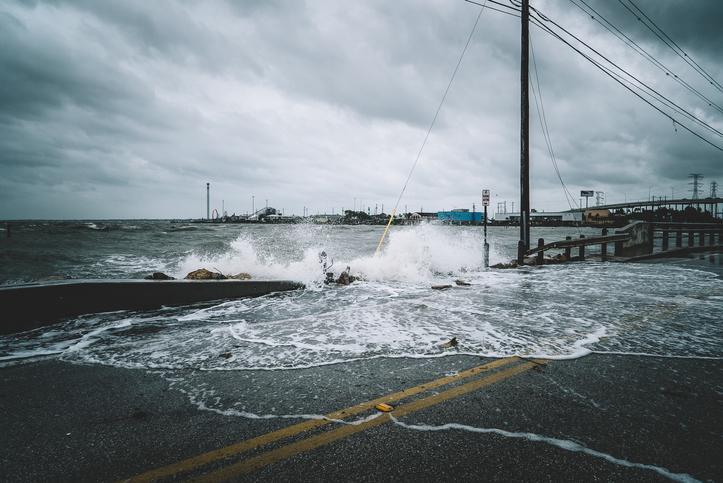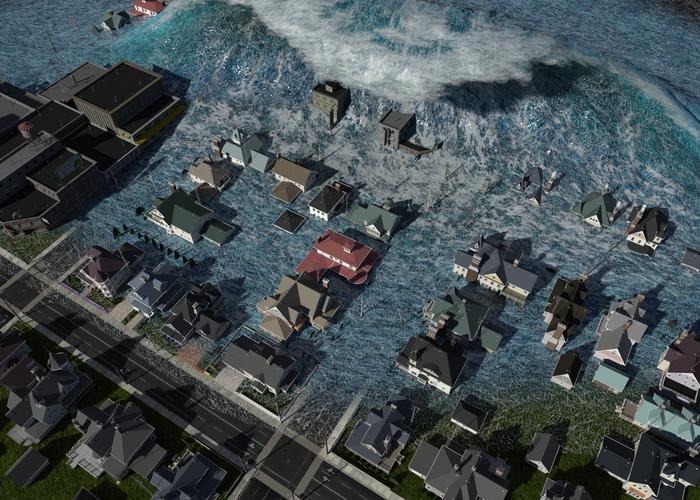What Are the Causes and Effects of Sea Level Rise?


Sea level rise is a serious and urgent result of climate change, mainly caused by melting polar ice caps and glaciers, as well as seawater expanding as it heats up. As global temperatures keep rising, sea levels are increasing at a rapid pace, threatening coastal communities, natural habitats, and important infrastructure around the world. It is crucial to understand what causes sea level rise and how it affects us so we can create effective plans to reduce its impact and adapt to the changes that are coming.
In this article from thedailyECO, we explore the causes and effects of sea level rise and discuss the measures needed to address and mitigate this ongoing issue.
Sea level rise - current situation
The world's oceans are facing significant challenges, with pollution and rising sea levels being major concerns. Over the past century, global sea levels have risen by approximately 15-20 cm (6-8 inches), primarily due to the melting of polar ice and glaciers, as well as the thermal expansion of seawater as it warms.
How much will the sea level rise by 2050?
Looking ahead, experts predict that sea levels could rise by 10 to 68 cm (4 to 27 inches) by the end of this century, with the possibility of even greater increases under more severe climate change scenarios. These changes are driven by rising global temperatures, which are causing ice to melt and oceans to expand.
The impact of these changes on coastal communities could be profound, making it essential to understand and address the underlying causes of sea level rise. We will delve deeper into these causes below.
Want to understand more about the nature of sea and ocean waters? Explore this intriguing subject in our other article.

Causes of rising sea levels
The primary cause of rising sea levels is global warming, which has been intensifying over the past few decades.
Climate change leads to higher global temperatures, contributing to several processes that cause sea levels to rise. Here's a detailed look at the key factors:
- Melting of polar ice caps and glaciers: the polar ice caps and glaciers are melting due to increased temperatures. Historically, ice would partially melt in the summer but refreeze during the winter. However, due to ongoing climate change, not all of the melted ice refreezes, leading to a net loss of ice. Additionally, reduced snowfall and shifts in seasonal patterns, such as earlier springs and later winters, contribute to this ongoing ice loss.
- Melting of ice sheets in Greenland and West Antarctica: the ice sheets in Greenland and West Antarctica are also experiencing significant melting. As these ice sheets melt, they contribute fresh water to the oceans. Additionally, processes such as the infiltration of meltwater into the ice sheet and the weakening of ice due to warming can accelerate the flow of ice towards the sea.
- Thermal expansion: when seawater warms, it expands. This thermal expansion increases the volume of ocean water and contributes to rising sea levels. This effect is a direct result of the increase in global temperatures.
- Land subsidence: in some regions, the land itself is sinking, which can contribute to relative sea level rise. This can be caused by factors such as groundwater extraction, natural geological processes, or the weight of large structures.
- Ocean currents: changes in ocean currents can affect sea level patterns in specific regions. For example, the Atlantic Meridional Overturning Circulation (AMOC) plays a role in regulating heat distribution in the Atlantic Ocean. Changes in AMOC could potentially influence sea level rise in certain areas.
How high will oceans rise if all ice melts?
While the exact volume of glaciers and ice caps on Earth remains somewhat uncertain, it's estimated that if all of them were to melt, global sea levels could rise by about 70 meters (around 230 feet). This would result in the inundation of every coastal city worldwide. For more information, visit the USGS Water Science School's page on glaciers and ice caps.
Discover more about the intriguing aspects of sea water in our additional article and expand your knowledge.
Consequences of rising sea levels
Rising sea levels pose a significant and growing threat to coastal communities and ecosystems worldwide. The impacts are far-reaching, affecting everything from property values and infrastructure to human health and biodiversity.
- Increased erosion of coastal areas can lead to damage of infrastructure, agricultural land, and properties.
- Rising sea levels increase the risk of flooding in coastal cities and low-lying areas, threatening homes, businesses, and critical infrastructure.
- As sea levels rise, saltwater can intrude into freshwater aquifers, contaminating drinking water supplies and harming agriculture.
- Rising sea levels can lead to habitat loss for coastal species, such as wetlands and mangroves, resulting in biodiversity loss.
- Rising sea levels can have significant economic consequences, including property damage, infrastructure disruption, and impacts on tourism and transportation.
- The spread of waterborne diseases, mental health issues, and increased vulnerability to heat-related illnesses are potential health risks associated with rising sea levels.
- Rising sea levels can contribute to more frequent and severe weather events, such as storms, tsunamis, and heavy rainfall.
Curious about how water shapes our planet? Dive into more details about the vastness of Earth's water coverage in our related read.

Solutions to stop sea level rise
To effectively address this challenge, we must take a multifaceted approach that combines both mitigation and adaptation strategies.
Mitigation strategies:
To combat climate change and limit global warming to 1.5°C above pre-industrial levels, we must significantly cut greenhouse gas emissions.
Key strategies include:
- Shift to clean energy sources like solar, wind, and hydroelectric power.
- Decrease dependence on fossil fuels for transportation and other sectors.
- Promote energy-saving measures and conservation practices.
- Encourage industries to adopt sustainable methods and technologies.
Additionally, restoring and protecting natural ecosystems such as forests, wetlands, and mangroves can absorb carbon dioxide and mitigate climate impacts. Investing in research and development of innovative technologies will also be crucial for reducing emissions and adapting to changing conditions.
Adaptation strategies:
- Building seawalls, elevating structures, and creating wetlands can help protect coastal areas from flooding and erosion.
- Developing land use plans that avoid or minimize development in vulnerable areas can reduce the risks associated with rising sea levels.
- Improving early warning systems, emergency response plans, and disaster relief efforts can help mitigate the impacts of climate-related disasters.
- Engaging local communities in the planning and implementation of adaptation measures can ensure that they are effective and sustainable.
International cooperation:
- Strengthening international agreements, such as the Paris Agreement, to enhance cooperation and accountability in addressing climate change.
- Providing financial support to developing countries to help them implement mitigation and adaptation measures.
- Facilitating the exchange of knowledge and best practices among countries to accelerate progress in addressing climate change.
Find out how floods shape our environment and communities in our other article, offering deeper insights into water-related challenges.
If you want to read similar articles to What Are the Causes and Effects of Sea Level Rise?, we recommend you visit our Climate change category.
- Greenpeace Archives. Sea level rise : http://archivo-es.greenpeace.org/espana/es/Trabajamos-en/Stop-climate-change/Impactos/Aumento-del-nivel-del-mar/
- Intergovernmental Panel on Climate Change (IPCC). Global warming of 1.5º: https://www.ipcc.ch/site/assets/uploads/sites/2/2019/09/IPCC-Special-Report-1.5-SPM_en.pdf







